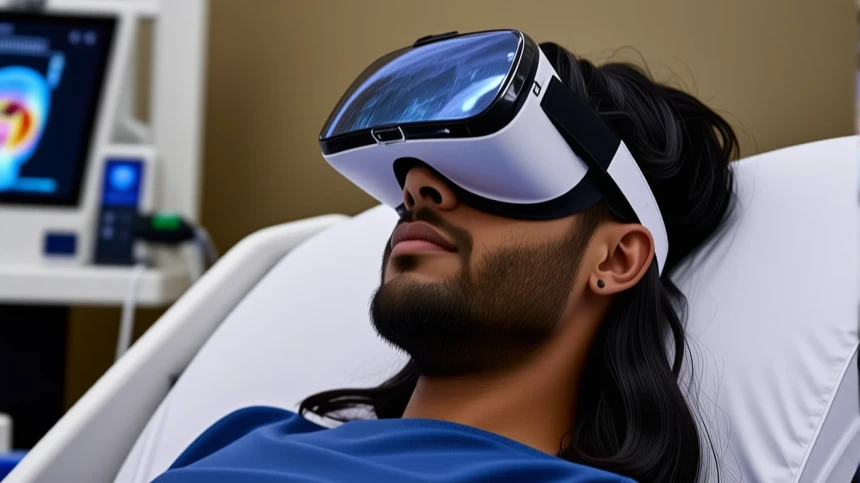How VR Technology is Transforming Patient Experience in Medical Treatments
Virtual Reality (VR) is being used to alleviate anxiety and pain in patients undergoing long medical treatments, offering a distraction through immersive experiences.

Virtual Reality (VR) isn’t just for gamers anymore—it’s revolutionizing healthcare, one patient at a time. Take Stanley Johnson, a 67-year-old Air Force veteran who turned his Apple Vision Pro into a lifeline during those nerve-wracking IV infusions for iron deficiency. Instead of counting ceiling tiles, he dove into the wellness app Tripp, swapping anxiety for guided meditations, serene soundscapes, and breathwork. Before he knew it, he was binge-watching movies, making the whole ordeal almost… enjoyable.
But don’t just take Stanley’s word for it. A study in the Clinical Journal of Oncology Nursing (yes, that’s a mouthful) showed VR’s magic on 90 chemotherapy patients at Vanderbilt-Ingram Cancer Center. A quick 12-minute VR session? Bam—stress and pain levels dropped, and heart rates chilled out by 6.6 beats per minute. Talk about a game-changer for patient comfort.
Thanks to budget-friendly headsets like Meta’s Quest 3S, VR’s no longer a luxury. It’s a practical tool, turning hospital rooms into escape pods from procedure discomfort. And with content picked to dodge cybersickness (because nobody wants nausea on top of chemo), it’s safe for even the queasiest patients.
As VR tech gets smarter, its healthcare role is only set to grow. From Stanley’s story to solid science, it’s clear: VR could soon be as standard in treatments as those awful hospital gowns—offering a digital escape hatch when patients need it most.
